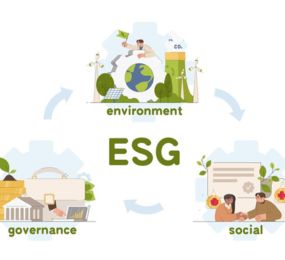In today’s dynamic corporate landscape, Environmental, Social, and Governance (ESG) factors are no longer optional—they are imperative. Companies are under increasing pressure to embed ESG principles into their core strategies, and one of the most powerful levers to drive accountability at the top is through executive compensation.
Integrating ESG metrics into executive pay structures ensures that leaders are not only financially incentivized but also held accountable for meeting sustainability goals. This shift aligns corporate strategies with stakeholder expectations, creating a win-win for businesses and society.
Why ESG in Executive Compensation Matters
Traditionally, executive pay has been tied to financial metrics such as revenue growth and shareholder returns. However, the rise of socially conscious investors and regulatory scrutiny has ushered in a new era of accountability. ESG-linked compensation drives long-term value creation by:
- Promoting Sustainable Practices: Linking pay to ESG metrics encourages executives to prioritize sustainability initiatives, such as reducing carbon emissions or improving diversity and inclusion.
- Enhancing Corporate Reputation: Transparent ESG commitments signal responsibility to investors, employees, and consumers, reinforcing brand trust.
- Mitigating Risks: Addressing ESG issues proactively minimizes risks related to climate change, social inequality, and governance lapses.
Key ESG Metrics in Executive Compensation
Effective ESG-aligned pay structures often include measurable goals such as:
- Environmental: Reducing greenhouse gas emissions, achieving net-zero targets, or implementing renewable energy projects.
- Social: Enhancing workplace diversity, equity, and inclusion; improving employee well-being; or engaging in community impact programs.
- Governance: Strengthening corporate governance policies, ensuring ethical business practices, and fostering transparency.
Challenges and Considerations
While integrating ESG into executive pay offers clear benefits, companies face challenges such as identifying appropriate metrics, ensuring accurate data collection, and balancing short-term and long-term goals. A transparent, stakeholder-driven approach is essential to overcoming these hurdles.
As ESG becomes a cornerstone of corporate strategy, tying executive compensation to sustainability goals is no longer just a trend—it’s a necessity. Companies that embrace this model will not only enhance accountability but also position themselves as leaders in the global transition to a more sustainable future.
By aligning incentives with ESG priorities, organizations can demonstrate a commitment to shared value, proving that profit and purpose can go hand in hand.
For more information and registration details, visit the official website: https://www.leadventgrp.com/events/2nd-annual-world-esg-and-climate-summit/details
For more information and group participation, contact us: [email protected]
















